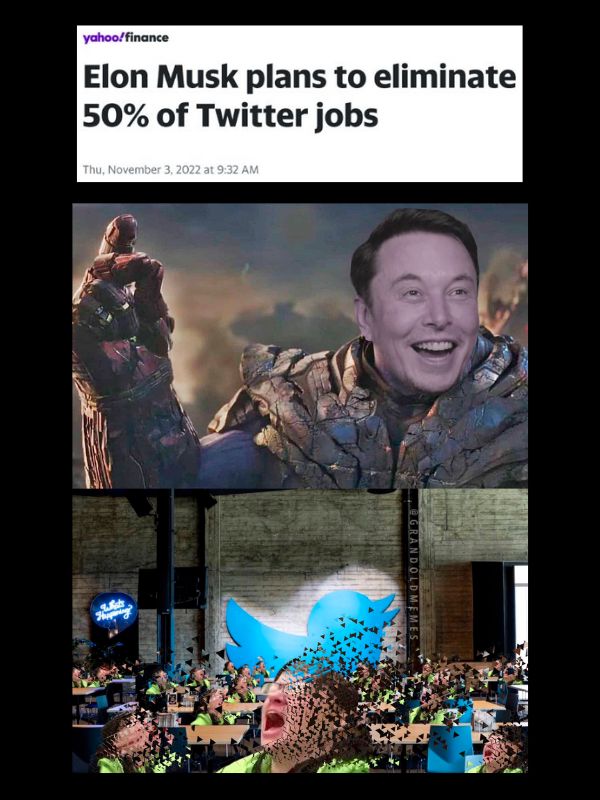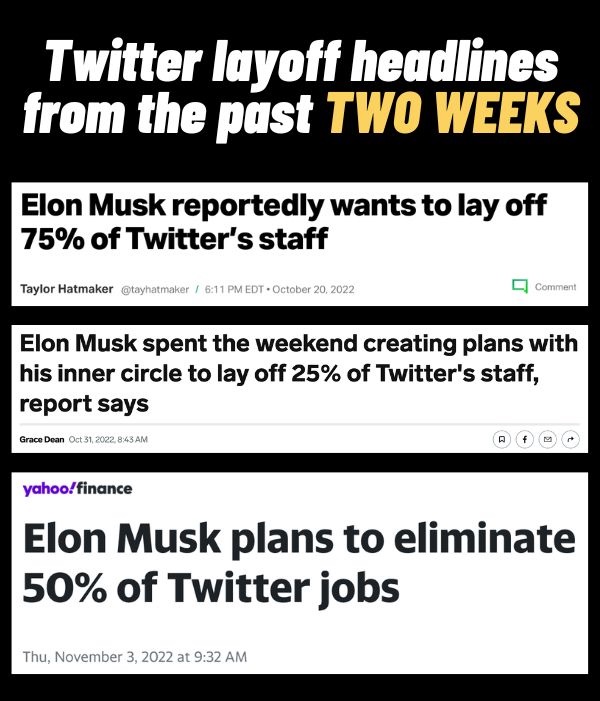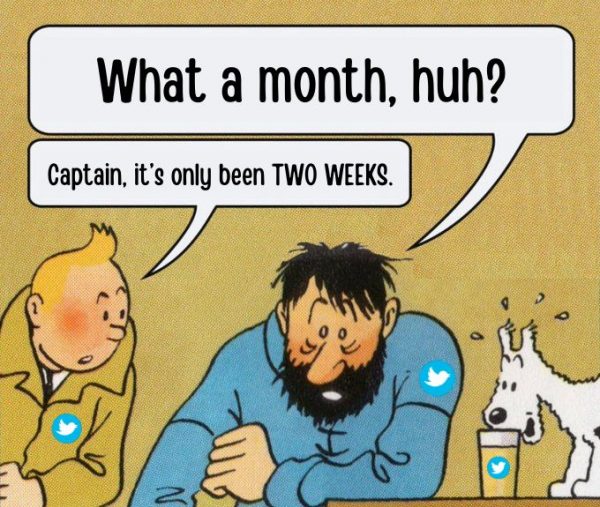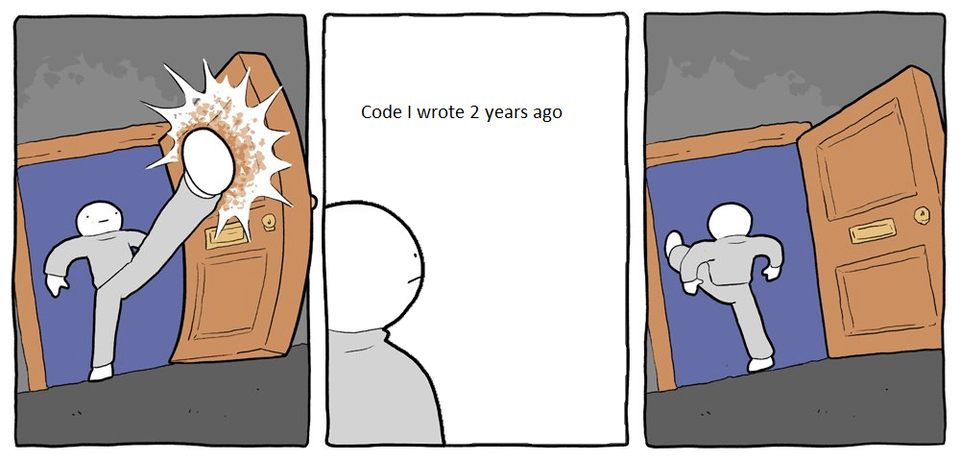“I. Am. Inevitable.”

It must be unnerving to be a Twitter employee right now. I had to look it up, and was shocked to see that his acquisition completed on October 27 — that’s only a week ago! With the news that they will now eliminate 50% of the positions at Twitter, Elon Musk has turned into Twitter’s Thanos, from the plan to stretch resources by eliminating half of all people to inexplicably having a fan club:

The third layoff estimate in two weeks

That 50% figure isn’t the first layoff percentage to be thrown around. In fact, it’s just the midpoint between two other numbers that appeared in the news — it was 75% on October 20th, and then down to 25% on Monday.
Whiplash
Anyone working at Twitter right now must be feeling whiplash from the rapid changes, which seem like Elon’s just throwing ideas against the wall and seeing what sticks.

Consider the remote work policy. What a difference six months makes:
- The headline from March 5, 2022 reads as follows: Twitter Employees Can Work From Home ‘Forever’ Or ‘Wherever You Feel Most Productive And Creative’.
- Today’s headline: Musk to cut half of Twitter jobs and end remote work for the rest, report says
Of course, the end of remote work Twitter shouldn’t come as a surprise. Elon’s take on remote work is well-known.
There’s also the recent story about Twitter developers being asked to print out their recent code for review, a request that could only be topped in bizarreness by the next request: Oh wait, that’s a security risk. Shred what you printed.
The printout exercise is futile — unless the goal was to have an easy-to-see physical representation of how much code each developer has produced, even when shredded. Printout is a pretty poor code review medium. As the Jargon File sums it up so succinctly: You can’t grep dead trees.
You should also keep in mind what it looks like from the points of view of the developers at Twitter, whose code was being reviewed by a team of Tesla developers, who build entirely different software (you know, the software that has a tendency to runs over kids — well, simulated kids, at least). They’re probably developing in different languages too — with the AI and embedded systems, the Tesla developers are likely using C++ and Python, while Twitter is known to use Scala on the back end, and this photo that Twitter coder Leah Culver posted shows that she’s working on the iOS app natively in Swift:

And finally, there’s the investigation into reviving Vine, which I wrote about a couple of days ago. The timeframe seems short, especially since people are being asked to review code that’s anywhere from 6 to 10 years old:
This could be the “ready, fire, aim” philosophy of management in action, or it could just be Elon flexing like Homer Simpson when he was crowned the Stonecutters’ Chosen One (which itself was a tribute to a scene from the 1987 film The Last Emperor):
Endgame (or: What to do)
If you’re a Twitter employee, you would do well to check out Collective Action in Tech’s A Layoff Guide: Tips for Tweeps by Tweeps to be shared in secure DMs between colleagues — and on a personal device, not a work one!
At the very least, read the What to Expect section, which has these points:
- Don’t rely on fair or reasonable treatment from the company. Hope for the best but plan for the worst.
- You will likely lose access to all company systems before being notified that you are terminated.
- Assume everything you do on work accounts and work devices is traceable and monitored.
- Your manager is obligated and incentivized to follow instructions from leadership. Do not assume your manager will be willing or able to help you, even if they want to.
Good luck, Twitter people.


One reply on “Elon Musk is Twitter’s Thanos”
There are tools for code visualization out there https://lmy.medium.com/7-tools-for-visualizing-a-codebase-41b7cddb1a14 but historically some of the largest software programs ever (phone system, gov systems often on COBOL) were printed out and reviewed line by line in order to successfully rewrite them.